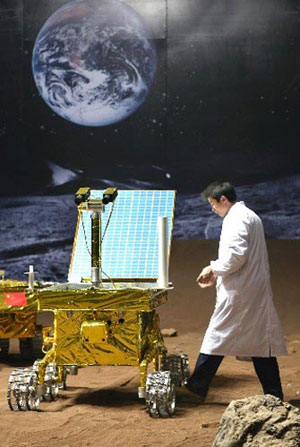(Ecns.cn)!China may realize its long-awaited goal of making a manned moon landing around 2025, Ye Peijian, chief scientist of deep space exploration at the China Academy of Space Technology, said on Tuesday.
According to China's three-phase manned space program, the first phase witnessed the launch of Shenzhou 5- the first manned space flight by the country. The launch systems and spacecraft of Shenzhou 5 independently outpaced the achievements of the European Space Agency (ESA) and even Japan's nascent space program.
"During the current second phase, the main target is to achieve major technical breakthroughs including sending more than one astronaut into space for more than one day," said Ye. This refers to Tiangong 1 that launched earlier last month. Functioning as a target spacecraft, Tiangong 1 is expected to become China's first space laboratory when it connects to the above mentioned spaceships.
Speaking ahead of his lecture in Nanjing on Tuesday, Ye also said that the Shenzhou 8 aircraft, that is to finish the long distance connection with Tiangong 1, will also launch at the beginning of next month.
In the third phase, China expects to build its own 60-ton space station by 2020, Ye said.
He also mentioned the widely watched Chang'e-3 lunar probe program, revealing that it "goes well and the experiment on its lunar rover has been conducted in the desert 200 km from Dunhuang in northwest Gansu Province."
In addition to the lunar rover, Chang'e-3 will be composed of a lunar lander, which working together with the rover, will make soft landing and inspection and probe tasks possible on the Moon. The lunar lander will be able to analyze lunar regolith on the Moon's surface, while the lunar rover will be able to inspect and probe in a circular area with a diameter of 5,000 meters from the lunar lander. The lunar rover, which is being independently developed by China, is a complex spacecraft that combines space systems engineering and intelligent robot technology. It is also provided with Earth-Moon remote control functions and a six-wheeled arm-swing walking function with an independent drive system.
Next, in 2017, a sample of rock from the moon will be returned to the earth, Ye said, which will signify the success of China's three-phase moon exploration plan.


















